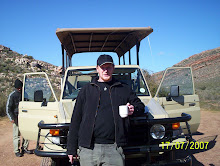Groynes
Groynes are cro
 ss-shore structures designed to reduce longshore transport on open beaches or to deflect nearshore currents within an estuary. On an open beach they are normally built as a series to influence a long section of shoreline that has been nourished or is managed by recycling. In an estuary they may be single structures.
ss-shore structures designed to reduce longshore transport on open beaches or to deflect nearshore currents within an estuary. On an open beach they are normally built as a series to influence a long section of shoreline that has been nourished or is managed by recycling. In an estuary they may be single structures.Rock is often favoured as the construction material, but timber or gabions can be used for temporary structures of varying life expectancies (timber: 10-25 years, gabions: 1-5 years). Groynes are often used in combination with revetments to provide a high level of erosion protection.

Sea wall
Seawalls are impermeable structures designed to provide a defence against the action of the sea. They are often made of concrete and vary in shape depending on when they were designed and the local conditions. Some will have vertical walls that tends to result in spray coming over the wall and can have a detrimental effect upon the beach by reducing its height. Others will have a slope leading up to a curved wall that is designed to reduce the size of the wave reaching the wall and then to reflect it back out to sea.
Riprap/Rock Armour
Large boulders, of 10 tonnes or more, are piled up along the shoreline to form a type of sea wall.
The rocks are dumped on top of eachother leaving gaps between them that allow water through. This disperses the energy of the waves and reduces their erosional power. They can be very effective.
he boulders must be large, strong and resistant to erosion. Granite and basalt are often used. Small or weak rocks would not be able to withstand the impact from the waves and would quickly be eroded.

Gabion Groynes
Large steel or stainless steel mesh cages that are filled with rocks.
They run down the beach, at right angles to the coastline.
They function in a similar way to wooden groynes.
Expected life span of 20 – 25 years if made from steel because they will rust. Stainless steel ones last much longer
Beach Nourishment
This replaces beach or cliff material that has been removed by erosion or longshore drift. Sand is either brought in from elsewhere, or transported back along a beach, usually once a year.In tourist areas this is often done during the spring after the winter storms and before the tourists arrive to enjoy the beach. Beach nourishment is a relatively inexpensive option it requires constant maintenance. The annual costs are lower than installing hard engineering options, but to keep replacing the beach material as it is washed away requires annual expenditure.
Managed Retreat (also doing nothing)
Engineers do nothing and the coast is allowed to suffer erosion, deposition and flooding naturally. This is an option considered when the land is of low value and there are no significant risks to the people. It is, of course, very inexpensive in the short term although if land erodes there may be a need to compensate people for the loss of businesses, land and homes.



1 comment:
I like see
Post a Comment